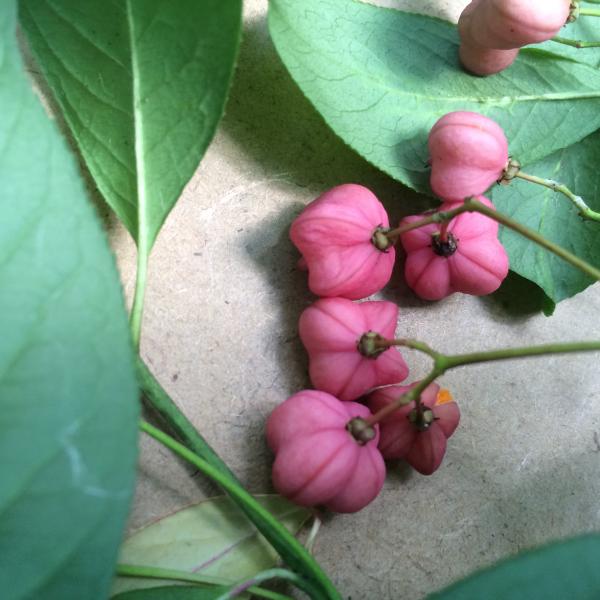
The growing season for 2016 saw many projects across the state tackling the forest, field, and wetland health issue of non-native invasive plants. Below are highlights of some of these amazing local efforts. Huge thanks to everyone who is working toward making our Vermont landscapes healthier and more resilient, and protecting them for generations to come.
Reading, VT
----------------
Small hands, big hearts----Beth Drinker, teacher for first and second grade at Reading Elementary School, had a plan. This plan was to connect her students to the woods surrounding their school and in their communities through a service learning project. Her crew of 13 students participated in the 3rd annual New England Garlic Mustard Challenge, competing against teams across the region on who can pull the most garlic mustard (a non-native invasive plant), while encouraging people to care for local natural areas. This crew continued the community service beyond the Challenge by creating and performing a play called “Garlic Mustard Wars” to sixty 2nd graders from Woodstock, Pomfret, Bridgewater, and Killington as part of the Super Junior Rangers program. These students also made garlic mustard pesto and served it at the Trek to Taste event at Marsh Billings Rockefeller National Historic Park, reaching an audience of varied ages and interests. Reading Elementary School intends to make this a schoolwide effort next spring.
Bennington, VT
--------------------
Integrated Pest Management--- The Batten Kill Watershed Comprehensive Invasive Species Management Association, a project of the Bennington County Conservation District, started in 2015, made great progress in 2016 to prevent the spread of invasive species within the Batten Kill Watershed.
BKW CISMA partnered with the Vermont Youth Conservation Corps on mechanical management of non-native invasive plant species such as barberry, common buckthorn, honeysuckles, Asiatic bittersweet, and burning bush. These efforts were completed in Arlington, Manchester, and Shaftsbury, with 6.5 acres treated and 106.5 person-hours. Chemical treatment was contracted with Vegetation Control Service, Inc, across 21.1 acres with 32 person-hours, in those same towns. Japanese knotweed was managed in Manchester and Sandgate through an integrated pest management plan that involved cutting in early July, and chemical treatment in September (4.4 acres, 143.5 person-hours). Through all this work, there were 28 people who directly contributed to these efforts.
Thetford, VT
----------------
It takes a village—the village of Thetford, VT to be exact. In early 2016, the Thetford Conservation Commission hosted a variety of ways for the locals to learn about invasive species, get hands on training, and participate in a town-wide pull throughout the month of May and early June. These events included a well-attended presentation in March on the non-native invasive plant garlic mustard, a hands-on training on removal techniques in May, the participation of 7th grade science students in classroom learning and managing patches nearby, assessing the town for populations of garlic mustard, and pulling garlic mustard at identified sites. All these efforts produced 149 bags; over a ton of garlic mustard was pulled (2,400 lbs) and the Selectboard supported the project by helping to get the disposal fee waived at the Lebanon Landfill. Many folks were involved in one way or another to make this project possible. The Conservation Commission plans to make 2017’s efforts bigger and better and work to protect Thetford’s forests.
Burlington, VT
-------------------
Inspiration in the woods--- The Winooski Valley Park District is working with multiple local schools to manage invasive plants across their parks. Non-native invasive plants are an ongoing issue at many of the parks, and the WVPD relies heavily on volunteer groups to manage the encroachment of invasive species. One ongoing project is to map the non-native invasive plants on their Ethan Allen Homestead property in Burlington, VT. WVPD is excited to work with Centerpoint students to map those invasive plants using iNaturalist on mobile devices, focusing on species like buckthorn, honeysuckles, and Asiatic bittersweet. The data Centerpoint students are collecting will help the WVPD identify high priority areas where they can focus future removal and mitigation efforts. In September, Park staff and Centerpoint students were trained on plant identification by VT Forests, Parks & Recreation staff.
WVPD is also working with OnTop students, who have come out to the Ethan Allen Homestead 6 times this year to help with invasive removal along the picnic shelter road. Their work removing buckthorn, honeysuckle, and bittersweet has revealed a magnificent view of the wetland at EAH and in the spring there are plans to do seedling and sapling plantings with the students.
Article Credit: Elizabeth Spinney, VT FPR
Photo Credit: Elizabeth Spinney, VT FPR, “Spindle Tree, a non-native invasive plant spotted along the edge of the trail by Centerpoint students at Ethan Allen Homestead, after they learned what to look out for in potentially invasive plants (keep green leaves longer into season, large amounts of seeds, tolerant of tough growing conditions). Spindle tree is closely related to Burning bush (both are in the genus Euonymus).”